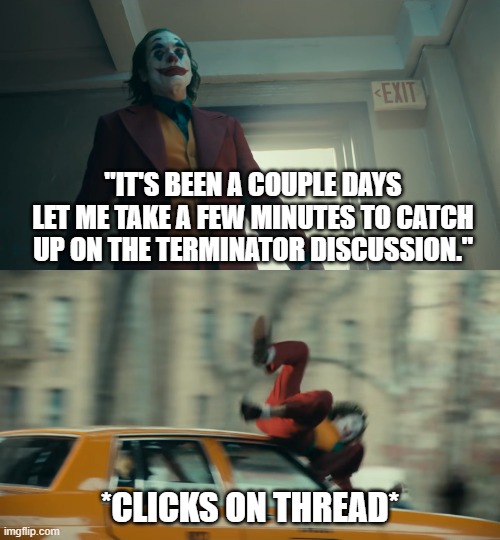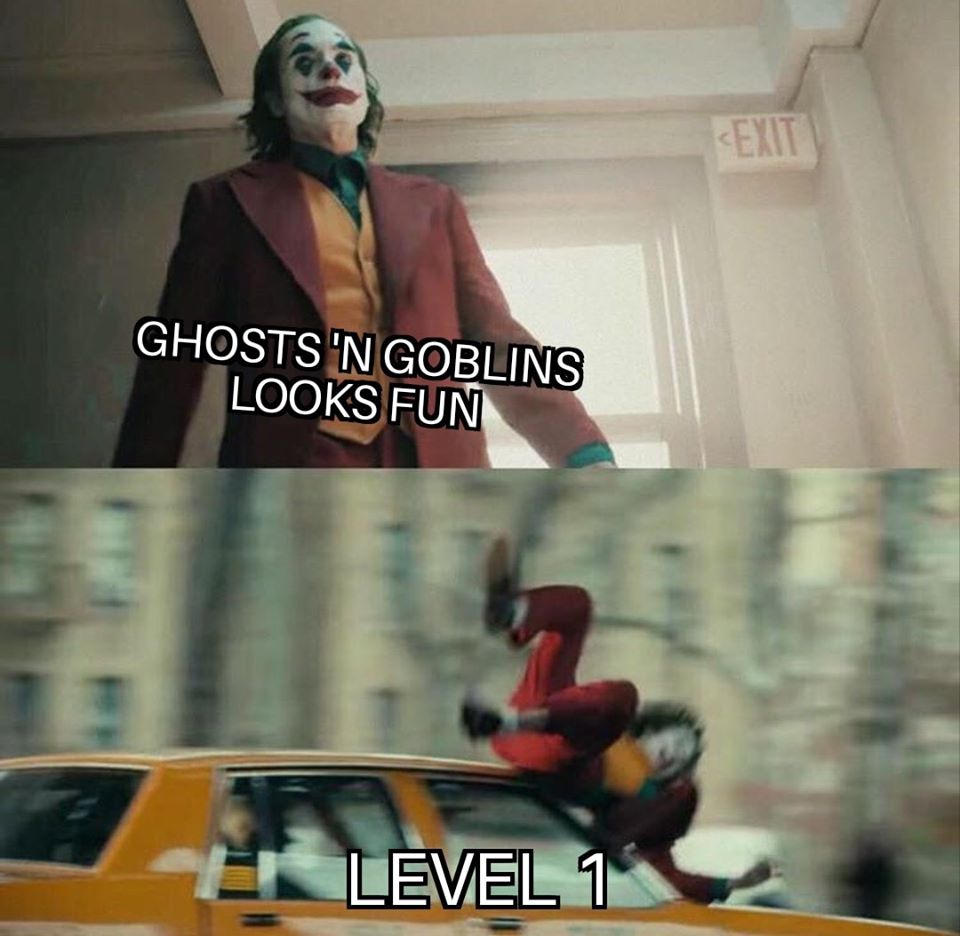After Skynet becomes autonomous (and Dyson would no longer be needed), the technological developments seem to kick into higher gear in the 21st century. Ground and air assault tech are developed, terminators are produced (with living tissue and even bad breath!), and Skynet presumably even creates a functioning system for time travel! Based on that context, I have to believe that the technological leaps made by Skynet between 1997 and 2029 would easily allow for repair of the recovered CPU. At the very least, repair it enough to retrieve info from it
Agreed. It would make every effort to do this.
I do concur that avoiding any undoing of the previous 1984 events would indeed be a logical objective that Skynet would reach. But I want to stop here to explain what I base that on just in case it seems like I'm attributing too much strategic calculation to the Skynet AI.
Skynet is described to have started as a strategic defense program trusted with replacing human military decision-making. Within a single month (from August 4th to the 29th of 1997), it gains self-awareness and employs an autonomous reaction in self defense against humanity. The nuclear strike on Russia, with a specific expected response, shows how accurate and adaptive its strategic formulations already were in 1997. And Skynet would've only grown *more* deductive and strategically sound all the way into 2029.
With all that said, Skynet could've arrived at the specific choice of 1995 perhaps to ensure that Miles Dyson would be far enough along not to risk tampering with him reaching certain benchmarks (by potentially exposing him to more future tech that he wouldn't have accounted for). And in 1995, John would still be young enough to dispose of with ease. He was a prodigy who would be formidable beyond his years as he got closer to adulthood, though. It would obviously be best to still target him well before he gets old enough to already be the resourceful battlefield warrior he proved to be in the 21st century.
Very good, I have nothing to add.
I think Skynet awareness of the T1 1984 events would help here too. Sarah had seen a T-800 in 1984 and might've prepared John for ways to defeat one. More importantly, the 1984 T-800 had indeed been defeated. The T-1000 would therefore represent a more reliable assassin with greater versatility.
Plus, with multiple timelines, wouldn't the need for an expanded lore explanation of why a T-1000 wasn't sent to 1984 become a moot point anyway? The reason why becomes a matter of there not being a T-1000 available to that first version of Skynet. So no need to create a Skynet "fear" of the T-1000. Is there anything in the film that alludes to any such thing being necessary if we apply the multiple timelines interpretation?
Oh no I wasn't suggesting that Skynet could have sent a T-1000 on the 1984 mission - I agree that it probably didn't even exist yet in that timeline. But for the 1995 mission - if, according to the expanded lore, Skynet was nervous of the T-1000 (perhaps it couldn't be restrained by a ''Read-Only'' mode like a T-800?) I wondered why Skynet went ahead and used it instead of simply sending another T-800.
Your suggestion works for me - either we don't have to take this little tidbit about Skynet fearing the T-1000 as canon because it's not explicitly stated in T2 - or we can say that Skynet suspected (or knew) that in another timeline it had already sent a T-800 on a mission to 1984 and that that Terminator had failed. The T-1000, with all of its capabilities was deemed to offer a bigger chance of success, while the risk of it going rogue must have been considered small enough.
Invoking that visual is something I will never object to.
Then lets gaze back in time to 2004 because we can
Good lord.
Sarah was still trying to sort things out. If she believed that John couldn't have existed any other way only 6 months after conceiving him, I can compartmentalize her logic that way. But what's more important to me is her eventual view that she *could* change the future, not just for John but for all of humanity. And I think most people would agree that the ending of T2 was supposed to symbolize a departure from any sort of closed-loop reality where fate is locked in and unavoidable.
There remains the small issue that John, as of the scene where he's talking to Uncle Bob underneath the station wagon, seems to have the same mistaken idea that his mum initially had. They also aren't accounting for ''Original John'' - i.e it was never Furlong's adult John who sent Reese - again, for our purposes I put it down to them not thinking it through fully - understandable because I've been a fan of this franchise for 30 years and in all that time I was content to say ''meh, it's time travel, tawhk to da haand!'' until this conversation over the past couple of weeks.
In any case, in T2 they seem to believe they can change the future without the unintended consequence of making John disappear out of existence or something. Plus they have Uncle Bob, a machine with super-advanced AI, going along with it so that must additionally persuade them that it can safely be done.
It might seem more complicated and exhausting here because a-dev and I are willing to get into the weeds. But the basic premise is simple enough: the first two movies make more sense when you allow for multiple timelines because that gets rid of most of the paradoxes and contradictions that exist otherwise.
Exactly. We're going into it in detail to prove the concept.
- We started off (well, you did) saying that the single linear timeline concept cannot work, the paradoxes are nonsensical
- so how then should time travel work? You presented the parallel timeline theory and added necessary detail as to how 2 time travellers from one timeline would end up in the same alternate timeline as opposed to each just creating a separate timeline
- I wanted answers to these questions - Would Skynet really be incentivized to pursue time travel in this scenario and likewise would the Resistance even feel any need to respond considering their timeline of origin will be unaffected? I was satisfied that the answer was yes to both and for the reasons we talked about
-we ruled that 2 timelines (Original + 1 alternate) wasn't enough to account for everything in the first 2 movies so we upped it to 3 (Original + 2 alternates)
-we ran our algorithms and demonstrated that 3 was indeed the magic number which enables T1 and T2 to play out as they do but with logic and sense behind them. Down with Time Travel Paradoxes!
- Original Timeline (with an original John Connor - father unknown and a Skynet developed by normal means) playing out with no time travel interference all the way up to 2029 when it is first used by Skynet - it sends the Terminator to 1984 to kill Sarah Connor and John sends Reese in pursuit. As soon as they enter the past they create.....
- Timeline #2 - the 1984 events of The Terminator playing out as we see them in the movie but then running with no further time travel interference all the way up to 2029 (again) at which point Skynet sends the T-1000 to 1995. This version of the Resistance (led by a new John Connor, Kyle Reese's son) is able to send the T-800 we know as Uncle Bob in response. As soon as these two enter 1995 they create.....
- Timeline #3 - the 1984 events of The Terminator are the 'past' of this new branch which plays out as we see in Terminator 2 Judgment Day in 1995. The storyline of this film sees the end of Skynet and thus no further time travel shenanigans. NONE I declare!
Last edited:



















 And just know that I seriously considered taking the word count even higher.
And just know that I seriously considered taking the word count even higher. 



